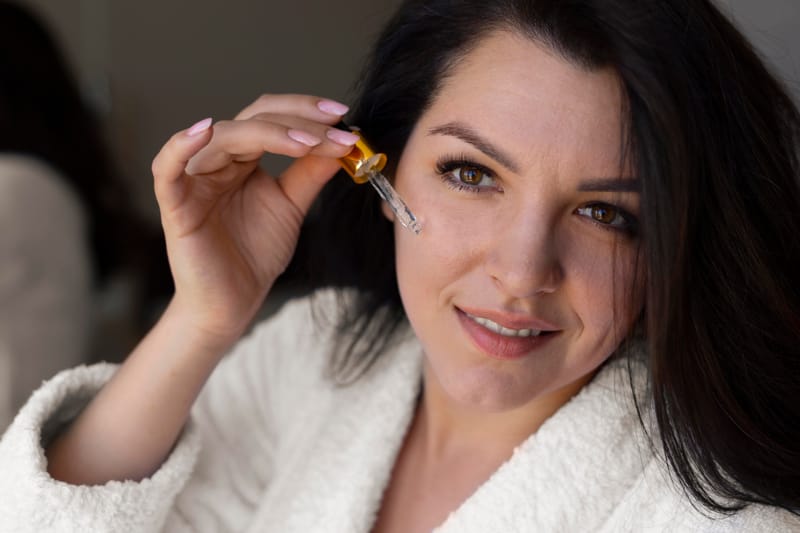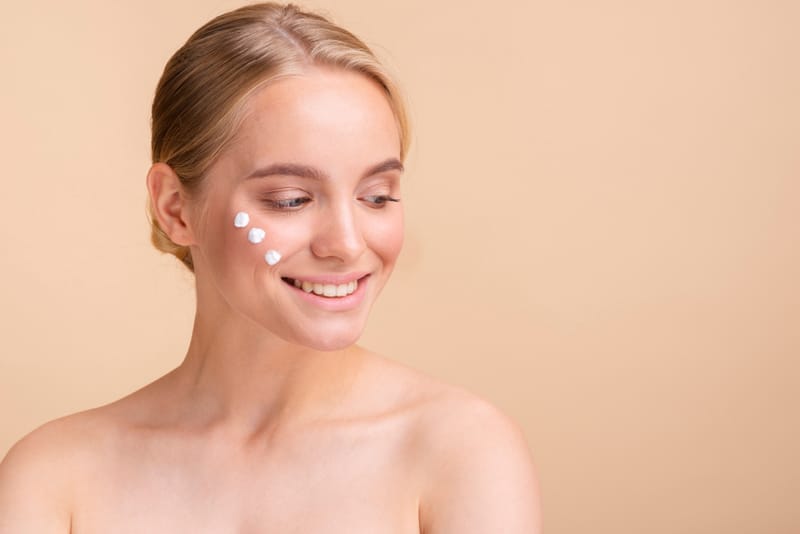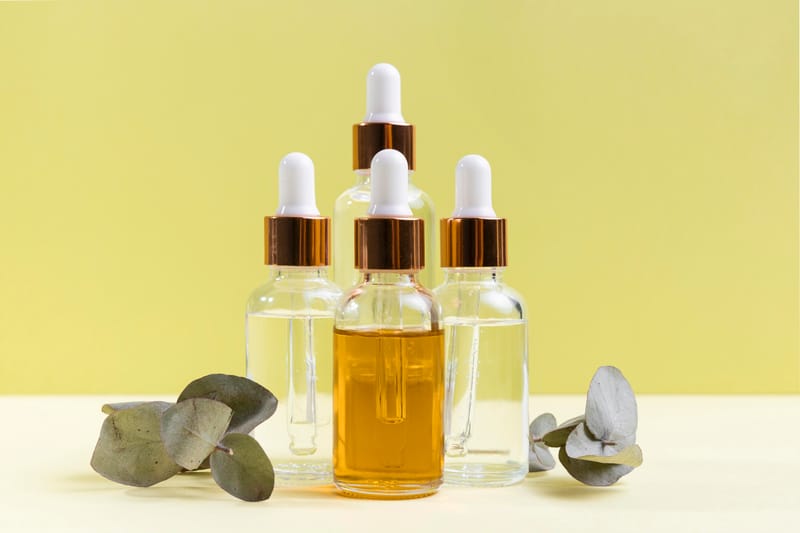Is It Okay to Use Azelaic Acid Every Day?
This article delves into the world of azelaic acid, providing you with all the information you need to incorporate it into your daily skincare routine safely.
Key Takeaways:
Azelaic acid is beneficial for treating various skin concerns and is generally safe for daily use.
Understanding the correct concentration and application method is crucial for maximizing benefits and minimizing potential irritation.
Consistent use of azelaic acid, along with proper skincare practices, can lead to significant improvements in skin health and appearance.
What Is Azelaic Acid?
Azelaic acid is a bit of a skincare superhero within the acne treatment world, and if you haven't heard about it yet, you're in for a treat. This naturally occurring acid is found in grains like wheat, rye, and barley and has become a star ingredient in the skincare world for its impressive benefits. It's a multitasker that tackles everything from acne to rosacea, hyperpigmentation to skin brightness.
What makes azelaic acid stand out is its gentle effectiveness. Unlike some other acids that can be harsh on the skin, azelaic acid is well-tolerated by most skin types, including sensitive skin. It works by killing the bacteria that cause acne and rosacea, unclogging pores, and reducing skin inflammation. It also helps to fade pigmentation by inhibiting the production of melanin, which makes it a go-to ingredient for those looking to even out their skin tone or reduce the appearance of dark spots.
Azelaic acid treatment benefits don't stop there. It's also packed with antioxidants, which means it can help combat free radical damage, contributing to a healthier, more resilient skin barrier. Whether you're dealing with specific skin concerns or just looking for a brighter, more even complexion, azelaic acid might just be the skincare hero you need.
The Benefits of Daily Use
Incorporating azelaic acid into your daily skincare routine can be a game-changer, offering a plethora of benefits that cater to various skin concerns. Its anti-inflammatory properties make it a soothing ally against redness and irritation, providing relief for those with sensitive skin conditions like rosacea. For acne sufferers, azelaic acid is a knight in shining armor, effectively reducing breakouts by killing acne-causing bacteria and unclogging pores. It's also a champion in the fight against hyperpigmentation, as it hinders the production of excess melanin, helping to fade dark spots and promote an even skin tone.
But the magic of azelaic acid doesn't end with targeted treatments. Its regular use can enhance overall skin health, thanks to its antioxidant properties that defend against environmental damage and support skin repair. Moreover, it's a gentle exfoliant, which means it can help to refine skin texture and reveal a more radiant complexion over time. With its broad spectrum of benefits and compatibility with other skincare ingredients, azelaic acid is a versatile addition that can elevate any skincare regimen, paving the way for clearer, calmer, and more luminous skin with each passing day.
Understanding Concentrations and Formulations
Navigating the world of azelaic acid concentrations and formulations is crucial to harnessing its full potential without overwhelming your skin. Typically found in over-the-counter products at concentrations ranging from 5% to 10%, azelaic acid can be effective yet gentle enough for daily use. Prescription-strength options may offer higher concentrations, such as 15% to 20%, targeting more stubborn skin issues under medical guidance. The vehicle of azelaic acid—be it a gel, cream, or foam—also plays a significant role in its efficacy and suitability for different skin types. Gels might be preferred for oily skin due to their lightweight texture, while creams could be more beneficial for dry skin, offering additional moisturizing benefits. Understanding these nuances ensures you select a product that aligns with your skin's unique needs and tolerance, paving the way for optimal results and a happier, healthier complexion.
How to Use Azelaic Acid Safely
Incorporating azelaic acid into your skincare routine requires a thoughtful approach to ensure safety and effectiveness. Start by patch testing a small amount on your skin to check for any adverse reactions. A pea-sized amount is usually sufficient for the entire face. Once you've determined it's safe for you, apply azelaic acid as directed, typically once or twice daily after cleansing and before moisturizing. It's important to use only the recommended amount, as overuse can lead to irritation. Additionally, azelaic acid can make your skin more sensitive to sun exposure, so applying a broad-spectrum sunscreen daily is crucial. For those with sensitive skin, introducing azelaic acid gradually—perhaps every other day—can help the skin adjust without causing undue irritation. While azelaic acid is generally well-tolerated, some people may experience mild side effects like tingling, burning, or itching. If these symptoms persist, it's best to consult a dermatologist. By following these guidelines, you can enjoy the benefits of azelaic acid while minimizing potential risks.
Potential Side Effects and Precautions
While azelaic acid is generally well-tolerated, it's not without potential side effects, particularly for those with sensitive skin. Commonly reported reactions and risk of irritation include itching, burning, stinging, and redness, especially during initial use as the skin acclimates to the treatment. More severe side effects, though rare, can include peeling, hives, or worsening of asthma symptoms in susceptible individuals. To mitigate these risks, it's essential to follow product instructions carefully and start with lower concentrations if you're new to the ingredient. It's also advisable to avoid using azelaic acid in conjunction with other potentially irritating skin treatments, such as strong exfoliants or acids, without consulting a dermatologist. Pregnant or breastfeeding women should seek medical advice before using azelaic acid, as safety data in these populations is limited. Remember, when in doubt about any allergic reactions, it's always best to err on the side of caution and consult a healthcare professional.
Combining Azelaic Acid with Other Skincare Ingredients
Incorporating azelaic acid into your skincare routine can be a bonus for addressing issues like acne, rosacea, and hyperpigmentation. However, the key to maximizing its benefits lies in how you combine it with other skincare ingredients. Azelaic acid is known for its versatility and can be paired with hydrating agents like hyaluronic acid and glycerin to offset potential dryness. It also works harmoniously with niacinamide, which can bolster its anti-inflammatory and skin-brightening effects.
When it comes to retinoids, proceed with caution; using azelaic acid alongside can amplify results, but it's crucial to introduce this combination slowly to avoid irritation. Sunscreen is non-negotiable, as azelaic acid can make your skin more sensitive to the sun. It's generally advised to avoid using it with other strong acids, like glycolic or salicylic acid, at the same time of day to prevent over-exfoliation and irritation. As always, patch testing new product combinations and consulting with a dermatologist can ensure that you're using azelaic acid safely and effectively in tandem with other skincare staples.
Real-Life Success Stories
Many users have found success in incorporating azelaic acid into their daily skincare routines. For instance, individuals with persistent acne have reported significant reductions in breakouts and improved skin clarity. Those with rosacea have also seen a decrease in redness and fewer flare-ups.
Case studies have shown that consistent use of azelaic acid can lead to visible improvements in skin texture and pigmentation issues. By sticking to a regular application schedule and following proper skincare practices, users can achieve long-term benefits and maintain healthy, radiant skin.
Mary Says. "After struggling with persistent adult acne-prone skin and the dark spots it left behind, I was desperate for a solution. My dermatologist recommended I try azelaic acid, and it's been a total game-changer for my skin. Within weeks, I noticed a significant reduction in inflammation and the gradual fading of my hyperpigmentation. It's been a few months now, and not only has my acne cleared up, but my skin tone is more even, and my complexion is brighter than ever. I'm finally confident to go out without heavy makeup, and I've received so many compliments on my skin's improvement. Azelaic acid has truly restored my skin's health and my self-esteem!"
Remember, individual results can vary, and it's always best to consult with a healthcare professional before starting any new skincare treatment.
Summary
Azelaic acid is a versatile and effective skincare ingredient that can be safely used every day. It offers a range of benefits for various skin concerns, from acne to hyperpigmentation. By understanding the appropriate concentration, formulation, and application method, you can incorporate azelaic acid into your routine without worry. While side effects are possible, they are typically mild and can be managed with proper care and gradual introduction. With regular use, azelaic acid can help you achieve clearer, more even-toned healthy skin.
FAQ Section
Q: Can azelaic acid be used both morning and night? A: Yes, azelaic acid can be used twice daily, in the morning and at night. However, if you're new to the ingredient or have sensitive skin, you may want to start with once-daily application and gradually increase as your skin adjusts.
Q: Should I apply moisturizer before or after azelaic acid? A: It's generally recommended to apply azelaic acid to clean skin and then follow up with a moisturizer. This helps to lock in the azelaic acid and keep your skin hydrated.
Q: Can azelaic acid cause purging? A: Azelaic acid may cause purging in some individuals due to its exfoliating properties, which accelerate the turnover of skin cells. This is usually temporary and should subside as your skin adjusts to the product. If purging persists or is severe, consult a dermatologist.
For more information about Azelaic Acid please click the link below!









